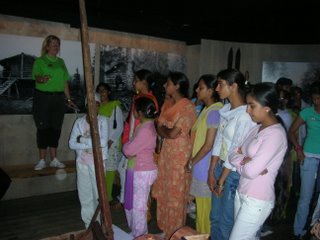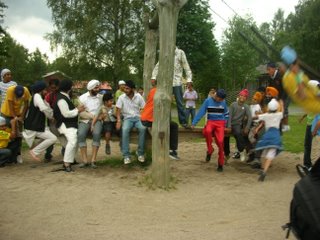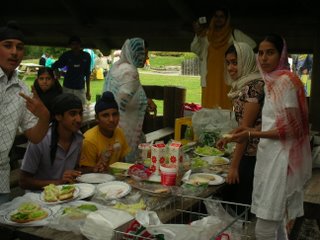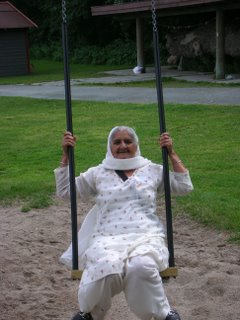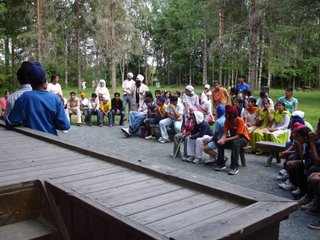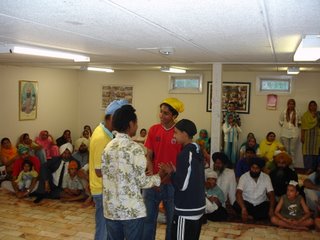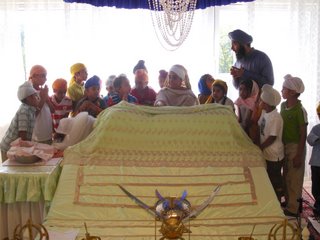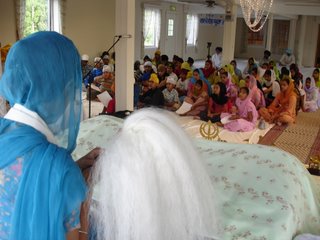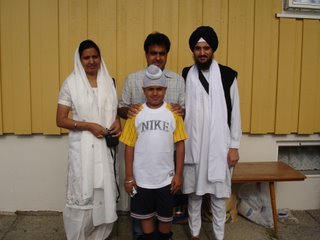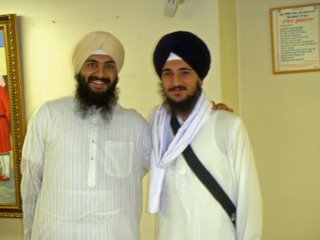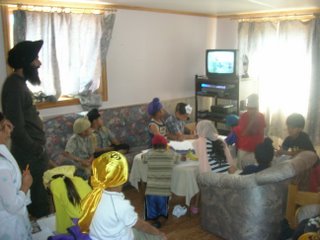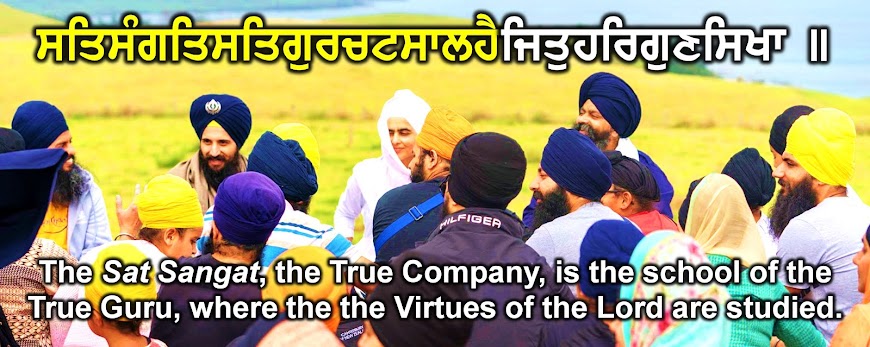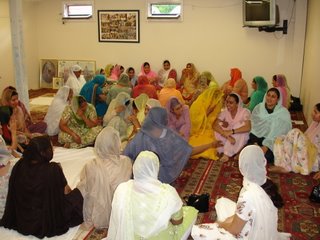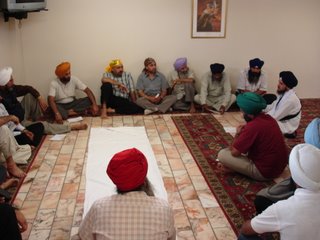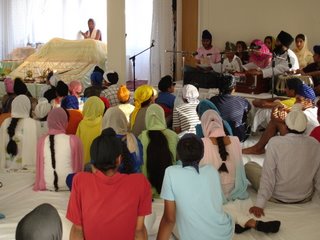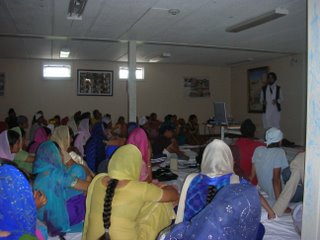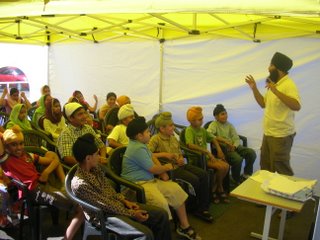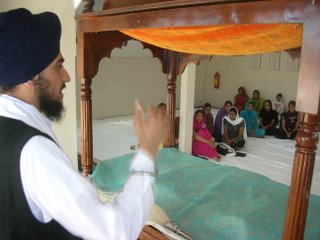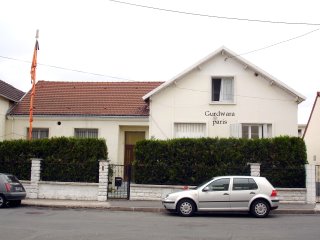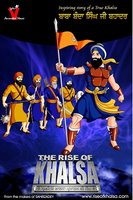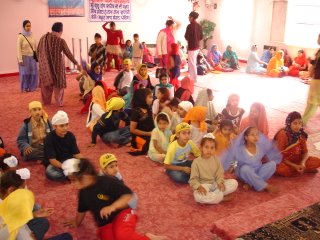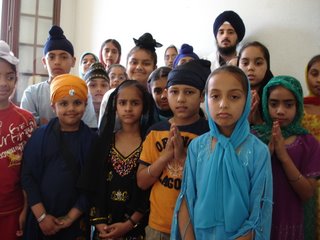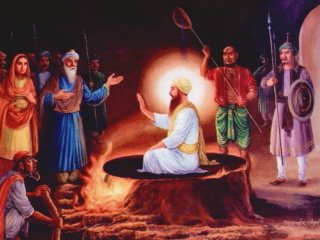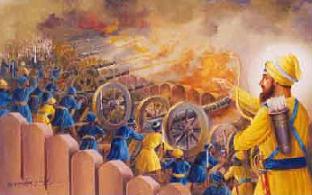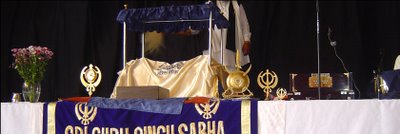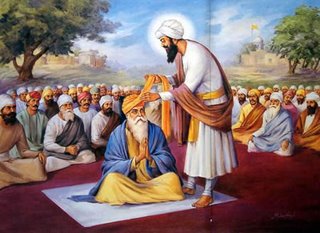Once I was invited to a Gurdwara Sahib to do Keertan and Granthi seva because the usual Granthi was unable to attend. The Langar seva was from a family who were celebrating their son's birthday. When I was invited to do Keertan and Granthi seva I was told that the son who's birthday it is, is not interested in coming to the Gurdwara and not interested in Gurmat. Therefore, I was told to speak English as well as Panjabi when explaining the Shabads and doing Katha.
While I had tea the Sangat read Sukhmani Sahib. Afterwards Daas did Keertan. While doing Keertan I glanced at the Sangat and saw the boy who's birthday it was, he was in his 20s. He was looking here, there, and everywhere and looked bored! Even when explaining the Shabads and sharing Saakhis (narratives) in English he still looked disinterested and gave vibrations of feeling uncomfortable in being in the Saadh Sangat, like he had somewhere else better to go. In a way I felt sorry for him and in my mind did Ardaas that Guru Sahib do Kirpaa on him that he gets Anand (bliss) from Gurbaani.
At the end of the programme Ardaas was done, followed by the Hukamnama. I was then called up to the stage. I stood up and was asked to present a Siropa to the family, as usually the Granthi Singh presents the Siropa and this week I was the Granthi Singh. My mind was not thinking and everything happened very quickly. The family came up to the stage. The father and son both had a clean-shaven face with their God-given appearance disfigured. I was asked to give the Siropa to the son; everything happened at the spur of the moment that without thinking I gave the son a Siropa. Afterwards I sat down and a guilty feeling sunk into my heart.
"O mind, what have you done? Did you not see that the son doesn't care about Guru Sahib, he wasn't interested in the Keertan, and didn't want to even be there? The father had woken up in the morning and dishonoured his hair before coming to the Gurdwara. What act have they done which is so worth-praising with a Siropa?" I realized that I should have refused to give a Siropa to the family and instead should have equipped myself with some inspirational Gurmat books and presented them to the son. Firstly, it still shows a token of appreciation for the family taking a step towards Guru jee by doing Langar Di Seva, and secondly, the son could read the book and at least learn something more about the Guru's Path. Afterwards I did Ardaas to Guru Sahib to forgive me for giving a Siropa to someone who had dishonoured their Kesh and not Amritdhari, and that in future I will not give Siropa to anyone who does not observe basic Rehit and commits any of the Bajjar Kurehits (four transgressions).

The 'Siropa', also known as 'Sirpao' is the 'Sikh robe of honour.' According to Bhai Kahn Singh Ji Nabha, the Siropa symbolises a physical robe worn from head to feet, it epitomises an absolute honour. In Sikhi, the Siropa is considered the highest award for one's temporal as well as spiritual efforts (seva).
Gurbaani says:
ਸੁਣੀ ਪੁਕਾਰ ਸਮਰਥ ਸੁਆਮੀ ਬੰਧਨ ਕਾਟਿ ਸਵਾਰੇ ॥
suNee pukaar samrath su-aamee banDhan kaatt savaare.
The Almighty Lord and Master heard my prayer; cutting away my bonds, He has adorned me.
ਪਹਿਰਿ ਸਿਰਪਾਉ ਸੇਵਕ ਜਨ ਮੇਲੇ ਨਾਨਕ ਪ੍ਰਗਟ ਪਹਾਰੇ ॥੨॥੨੯॥੯੩॥
pehir sirpaa-o sevak jan mele naanak pragatt pahaare. ||2||29||93||
He dressed me in a 'Sirpao', robes of honor, and blended His servant with Himself; Nanak is revealed in glory throughout the world. ||2||29||93||
(Ang 631)
To the ones receiving the robes of honour by false pretences, Gurbaani clearly says:
ਸਾਕਤ ਸਿਰਪਾਉ ਰੇਸਮੀ ਪਹਿਰਤ ਪਤਿ ਖੋਈ ॥੩॥
saakat sirpaa-o reshmee pehirat pat kho-ee. ||3||
But by putting on the Sirpao, silk clothes, of the faithless cynic, one loses one's honor. ||3||
(Ang 811).
A Siropa is placed around the neck, but is intended to be worn on the head as a Dastaar (turban). From the name "Siropa", the word "Sir" means "head", illustrating that the Siropa is meant to be worn as a Dastaar however is usually placed around the neck when it is being presented to a person. Sri Guru Amar Daas Sahib Jee used to receive a Siropa every year from Sri Guru Angad Dev Jee (in total eight) and it is said he would wear it on his head every day.
Unfortunately, the tradition of the Siropa has been watered down, like most other things, and has lost its original intended value and importance. In the army, only a person who has achieved something remarkable receives an award medal. However, someone who is wearing a tattered army uniform, looking like a mess or not complying with the army discipline, does not qualify to receive the reward. An army award medal will only be awarded to someone who shows an act worth praising, is dressed in full uniform and practices strict discipline. However, in Sikhi today, someone who has disfigured their God-given appearance, doesn't keep basic Rehit (discipline), hasn't committed themself to the Guru (through taking Amrit) are being given Siropas without a thought.
Some possible ideas of books to give as gifts (Click
here for more info these books):
Nowadays anyone and everyone are presented Siropas, which have become part of a business. Someone pays to do an Akhand Paath and on the Sunday on the completion of the Akhand Paath they receive a Siropa regardless of whether they listened to the Paath, did Seva or whether the night before the person had been drinking alcohol. I even know of cases of Atheists, smokers and those who don't believe in Satguru Sri Guru Granth Sahib jee receiving Siropas from Gurdwara Committees in order to have some photo shots and come impress others.
Perhaps we need to reserve the gift of presenting a Siropa for special cases when someone has done special Seva for the Panth and humanity and the Sangat wishes to recognize their efforts. Instead we need to think of alternative ways of showing appreciation and given a token gift to people. Presenting inspirational Gurmat Books as gifts are a great way for showing appreciation and at the same time it's an excuse for someone to have the opportunity to learn about GurSikhi. Even if the person doesn't read the book there and then and instead leaves it lying on their bookshelf. Perhaps one day, they will be browsing or dusting their bookshelf and think "O yeah, I remember receiving this book, I wonder what's it about" and start reading.
